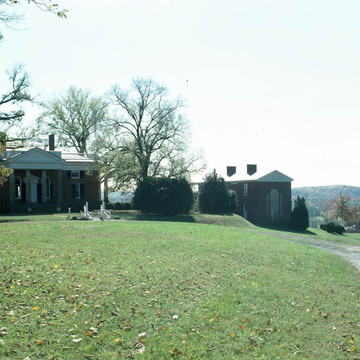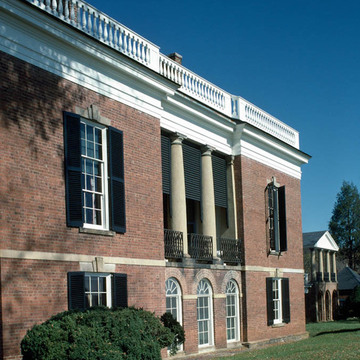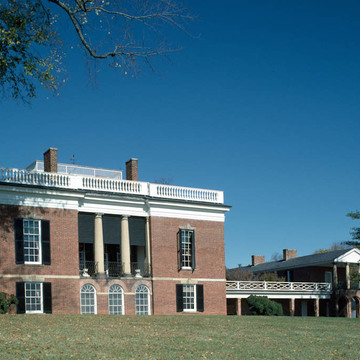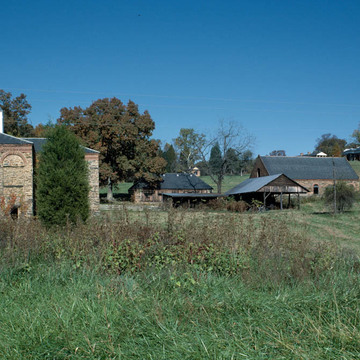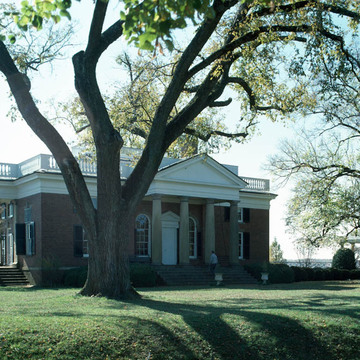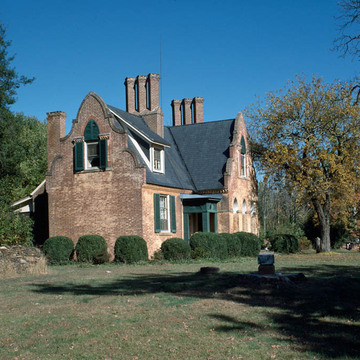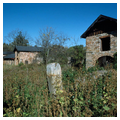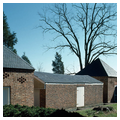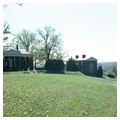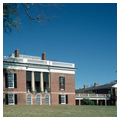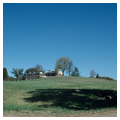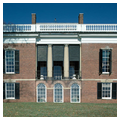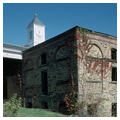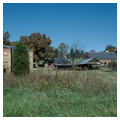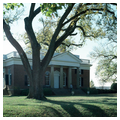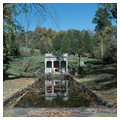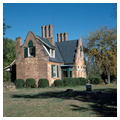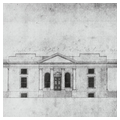Despite its inaccessibility, the Bremo complex is so important it must be noted. The major architectural elements were created under the direction of General John Hartwell Cocke, a planter who was a noted reformer and an associate of Jefferson. Upper Bremo (1817–1820, John Neilson and others) is very much in the Jeffersonian villa idiom. Consisting of a central pavilion, hyphens, and two end pavilions, it stretches along the bluff overlooking the James River. Neilson, who had worked for Jefferson at Monticello and the University of Virginia, prepared the drawings and drew together several schemes developed over the years by Cocke and others. Cocke, however, provided ideas. Neilson's drawings, located at the University of Virginia, were misplaced for years, and consequently some scholars have attributed the house to Jefferson. That attribution has been disproved by recent scholarship.
Below the house are farm buildings and a porticoed stone barn, reminiscent of Palladio's work. Bremo Recess (1807–1808; 1834–1836, renovation, John Hartwell Cocke) is located on another part of the plantation and was originally a wooden house that Cocke lived in while Upper Bremo was being constructed. Later, when he had turned the management of the plantation over to his son, he encased the house in a brick Jacobean Revival facade, with gables and clustered chimneys. In a letter of 1844 Cocke stated, “the stile is copied from the only two specimens of the like buildings I ever saw—the well remembered old Six-chimney House in Wmsburg . . . and Bacons Castle.” An early example of American Colonial Revival, the design also owes a debt to the contemporary English cottage orné and perhaps to the work of Alexander Jackson Davis. Lower Bremo (1839–1840, Cocke; 1917, renovation, Robert E. Lee Taylor), on still another part of the plantation, is a further essay in the Jacobean Revival. Here Cocke added a wing to a preexisting house for another son, and Taylor later completed the house in the same idiom. Also on the estate is Temperance Spring (1845, Alexander Jackson Davis), a small Doric temple that stood near the James River and Kanawha Canal and was intended to influence riverboat men to give up the evils of drink: the Temperance Movement was another passion of Cocke's. The building has been moved to Upper Bremo.




